The advantages of living in ancient Istanbul, which was the capital of the Roman, Byzantine and Ottoman Empires and where approximately 17 million people lived, are undoubtedly more than our other cities. However, the biggest disadvantage is that it is close to the fault line with a very high risk of earthquakes, in addition to its negative effects such as crowds, traffic and air pollution.
The fault line, which reminded itself again with the 5.8-magnitude earthquake we experienced recently, inevitably created an uneasiness. Let's first give some information about the earthquake with the slogan that earthquake does not kill, carelessness does. Then let's look at what to do BEFORE, AT THE EARTHQUAKE, AND AFTER THE EARTHQUAKE
EARTHQUAKE RISK IN TURKEY
As seen in the "TURKEY EARTHQUAKE HAZARD MAP" below, our country is located on the North Anatolian Fault Zone with high seismicity.


Image 1: Turkey Earthquake Hazard Map
First earthquake belt: Ağrı, Erzincan, Erzurum, Tokat, Amasya, Bolu, Kocaeli and Çanakkale provinces are located in this belt. It also includes Manisa, İzmir, Aydın and Denizli from its western end.
Second earthquake belt: It surrounds the above-mentioned provinces. Maras. Tunceli. Malatya. Cankiri. Yozgat. Servant. Opium. Burdur. Mugla. The provinces of Istanbul, Gümüşhane and Kars are located in this belt.
Third degree seismic belt: It covers the regions surrounding both belts. The provinces of Adana, Sivas, Kayseri, Kırşehir, Eskişehir, Kütahya, Balıkesir, Edirne, Kastamonu and Samsun are also located in this belt. There may be severe earthquakes.
Fourth degree earthquake zone: Ankara, Antalya, İçel, Nevşehir, Niğde, Antep, Adıyaman, Diyarbakır, Kırklareli and Hakkari. There can be moderate earthquakes and light earthquakes.
Fifth degree seismic belt: In this belt, which is considered as a non-hazardous zone, the corridor extending between Antalya and İçel to Salt Lake and the South-Eastern Anatolia Region close to the Syria-Iraq border enters.
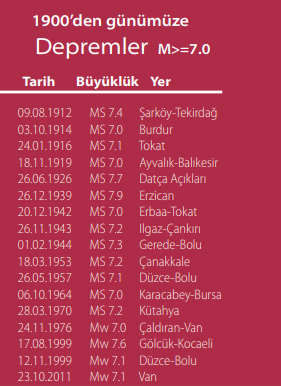
ISTANBUL'S EARTHQUAKE RISK
The situation in Istanbul is a little more complicated. In the city, which hosts approximately one fifth of the country's population and half of the industrial area, factors such as unplanned urbanization, misuse of lands, etc. may cause the earthquake risk to be even higher. Recent studies also say that an earthquake with a magnitude greater than 7 is highly likely to occur in the coming years.
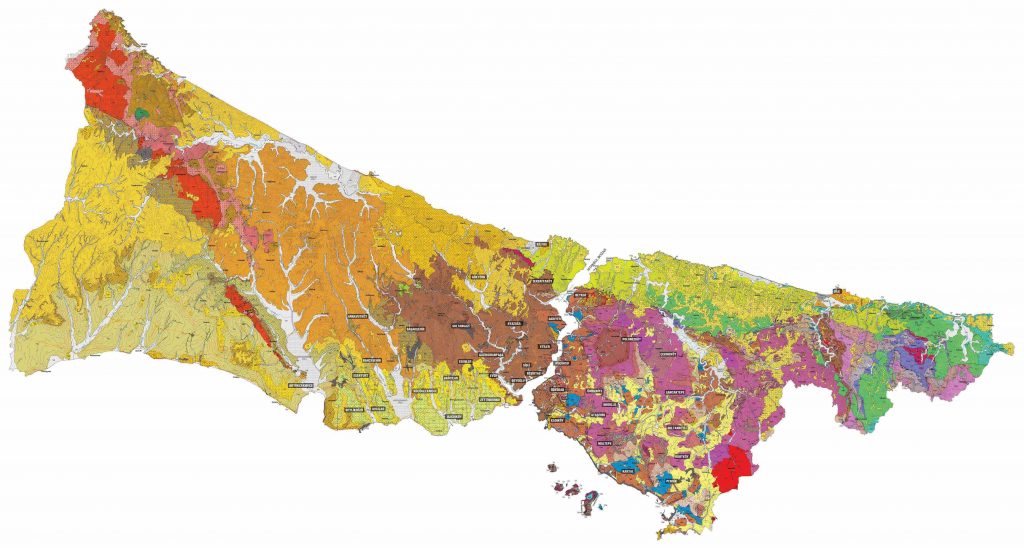

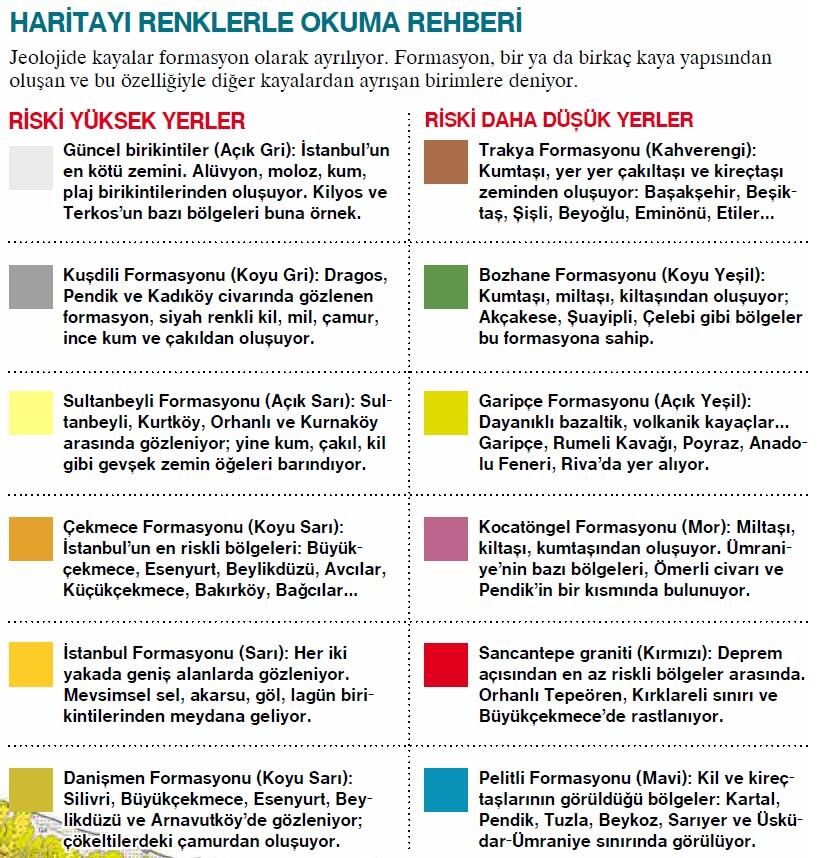

SO WHAT SHOULD WE DO?
BEFORE THE EARTHQUAKE
- We should be open to taking precautions by being in the mentality of "it can happen to any of us".
- Have your house checked by the relevant institutions. Take the necessary precautions.
- How do we get out of our house fast? We have to plan and practice.
- Tell all household members what to do in the event of an earthquake.
- Fix cabinets, shelves and bookshelves that will harm you when they topple in your home.
- Learn how to turn off gas, electricity and water in case of danger.
- Keep a fire extinguisher in your home.
- Painting, painting, etc. on the wall at your bedside. Do not hang things that will fall on your head.
- Get basic first aid training.
- After the earthquake, find your meeting area via e-Government and determine it together with all family members.
- Get your earthquake insurance.
- Aracınızı üzerine moloz düşmeyecek açık alanlara park edin ve aracınız için deprem çantası hazırlayın.
- Park your vehicle in open areas where debris will not fall on it and prepare an earthquake kit for your vehicle.
- Prepare a bag with emergency supplies as in Figure 5.

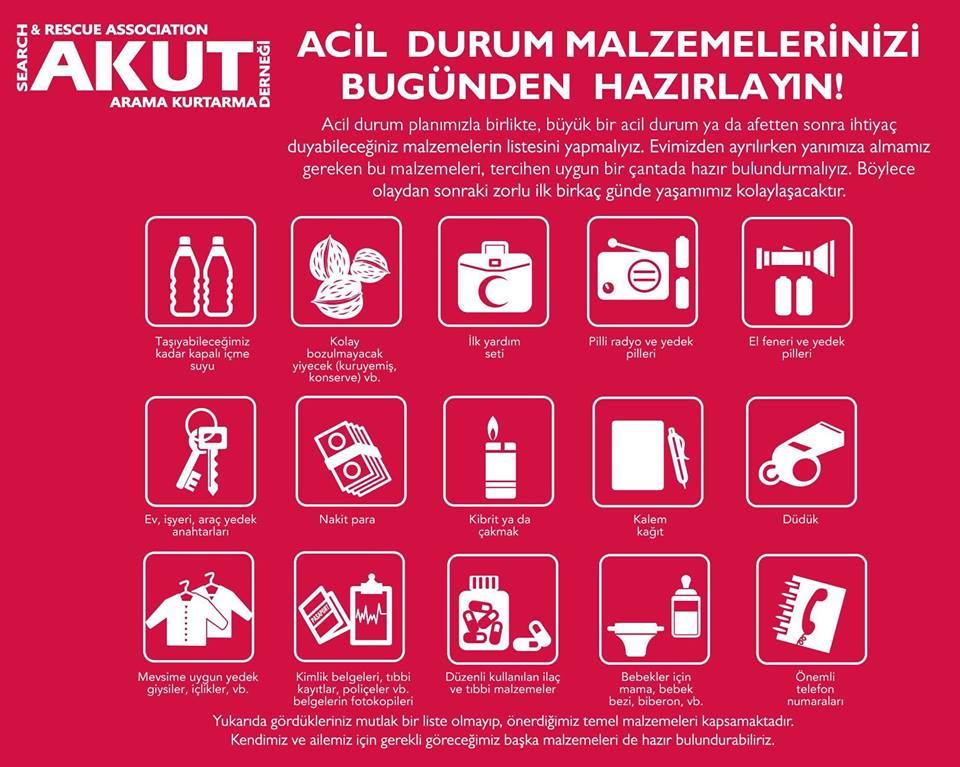
AT THE TIME OF EARTHQUAKE
IN THE BUILDING: Keep calm, don't panic. Create a life triangle by covering your head with your hands in the fetal position next to a solid piece of furniture.
IF YOU ARE IN BED: Roll over to the side of the bed. Build a life triangle. Have your earthquake kit within reach.
IF YOU ARE IN A VEHICLE: Tow your vehicle to a safe place. The quads are close.
AFTER THE EARTHQUAK
- Let's first check ourselves and then the people around us whether they are injured.
- Before leaving the house, be sure to take your earthquake bag. Put on your shoes.
- Leave your home or workplace calmly after the earthquake is over.
- Go with the family members to the meeting areas you have determined before.
- Extinguish small fires by responding to them. If the fire is large, call 110.
- Check if your location is safe. Turn off anything running on gas, water and electricity.
- Do not enter damaged buildings.
- Be prepared for aftershocks.
- If you're under debris, keep your spirits high because you need to use your strength sparingly. Dream dreams that will not lose your hope for life, and if there are others in the wreck, suggest them.
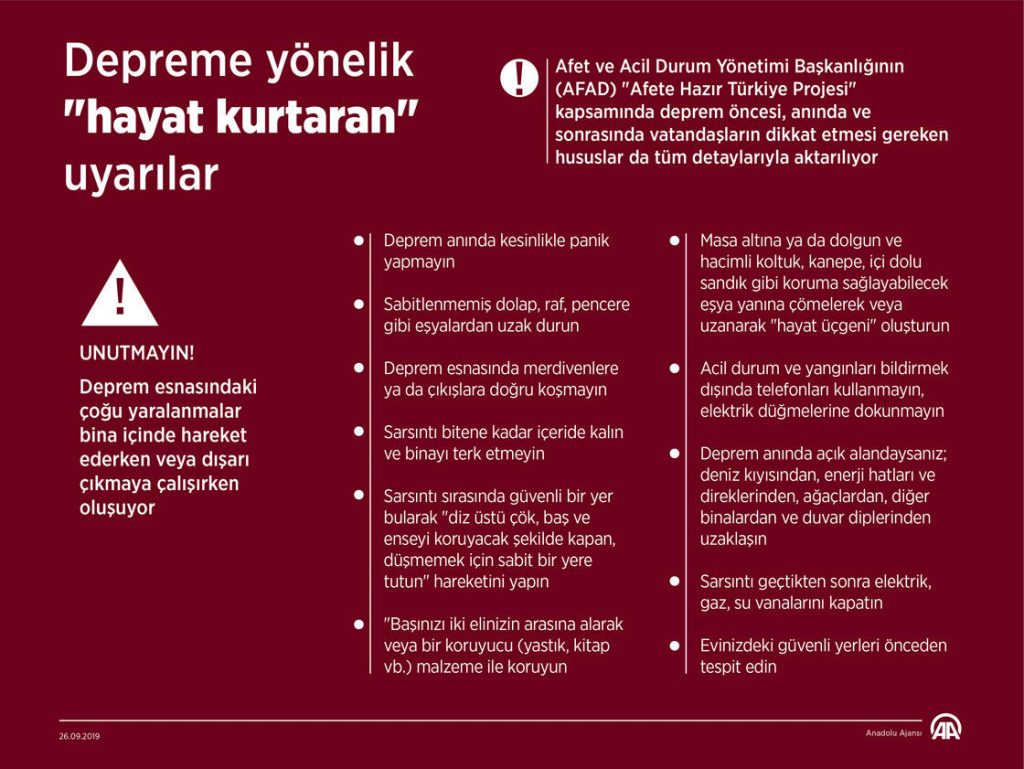

USEFUL INFORMATION
- Does a fault line run under your house? You can check it here.
- There is only one address within the borders of Istanbul where you can get earthquake education. Within the borders of Kadıköy Municipality, DISASTER EDUCATION AND AWARENESS PARK provides this training to all citizens free of charge. Address: Kozyatağı, Saniye Ermutlu Sk. No:3, 34742 Kadikoy/Istanbul
- There is an education presentation about earthquake on the website of IMM. You can access it by clicking here.
- Afad's website has good information about first aid training. You can access it by clicking here.
- An animation describing the Marmara fault and Istanbul is at this link.
- Disaster information files. It must be printed and hung. 1. FILE 2. FILE 3. FILE
- 10 tips that can save your life instantly from an earthquake are in this video.

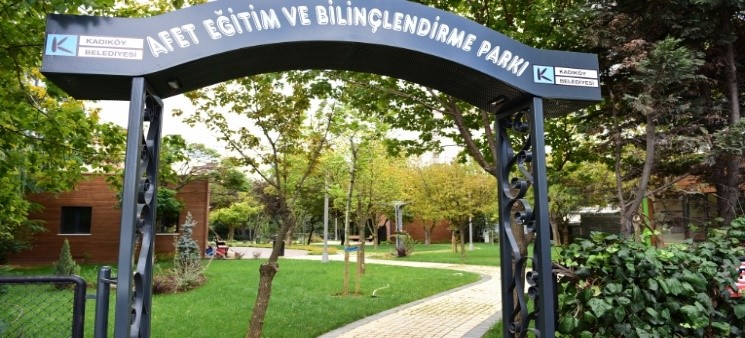
When we take these precautions, we will be ready for an earthquake psychologically.
I wish you all an earthquake-free life.
Writer: gezenotelci
References: Image 3 and Image 4 are taken from hurriyet.com.tr

